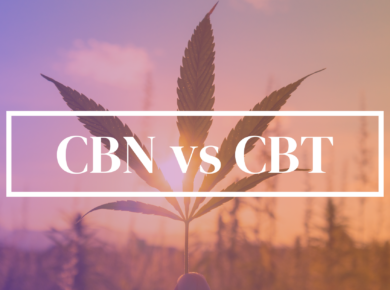CBD and CBGa are both essential compounds found within the hemp and cannabis landscape. Distinguishing between them revolves around understanding their distinct chemical compositions and the roles they play.
CBD, widely recognized as Cannabidiol, takes the limelight for being non-psychoactive and abundantly present in hemp and cannabis plants. It has garnered significant research attention, primarily for its potential interactions with the human endocannabinoid system—a system instrumental in modulating various physiological processes such as appetite, sleep, pain, and immune function.
Conversely, CBGa, or Cannabigerolic Acid, earns the moniker of the “mother” or “stem cell” among cannabinoids. This is credited to its role as the foundational compound from which other cannabinoids, encompassing CBD and THC, evolve. Predominantly found in raw hemp, CBGa gradually metamorphoses into different cannabinoids when subjected to light or heat.
In essence, while both CBD and CBGa originate from hemp, their unique chemical structures and functionalities set them apart. CBD stands out as a primary cannabinoid interacting with our endocannabinoid system, while CBGa acts as the pioneering compound that gives rise to multiple other cannabinoids.
Many States allow hemp derived cannabinoids under the 2018 Farm Bill as long as they contain less than .3% D9 THC. Some States have explicitly banned cannabinoids like Delta 8, so check your local rules and regulations before purchasing.
Here’s the rules for Kush.com and more details
Frequently Asked Questions (FAQs)
What is CBD and its connection to hemp? CBD, representing Cannabidiol, is among the myriad compounds residing in hemp. Its non-psychoactive nature means it doesn’t elicit the classic “high” associated with cannabis. Extracted from hemp, CBD finds its way into diverse products, from oils and edibles to topicals.
How does CBGa fit into the hemp narrative? Termed as the “mother” of cannabinoids, CBGa (Cannabigerolic Acid) is the initial compound birthed by the hemp plant. Through enzymatic reactions, it eventually transitions into various cannabinoids, CBD included. Like its counterpart, CBD, CBGa is non-psychoactive.
Are the extraction methodologies for CBD and CBGa parallel? Indeed, CBD and CBGa share similarities in their extraction techniques. Both can be extracted employing methods like CO2 and ethanol extraction. Nonetheless, to maximize yield, CBGa is often sourced from younger hemp plants, given its tendency to convert into other cannabinoids over time.
What roles do CBD and CBGa play? CBD dominates a wide array of products, from oils and edibles to topicals, celebrated for its potential in fostering relaxation and holistic well-being. CBGa, though less prevalent, is gradually gaining traction for its potential utilities and is commonly found in raw hemp juices and other analogous products.
Are there any side effects linked to CBD and CBGa? Individual responses can differ. Some might encounter mild side effects like dry mouth or drowsiness with CBD. For CBGa, research remains in its infancy, and potential side effects aren’t fully deciphered. Always initiate with a minimal quantity and observe your body’s reactions.
Shop
Similar Product Searches You Might Be Interested In:




